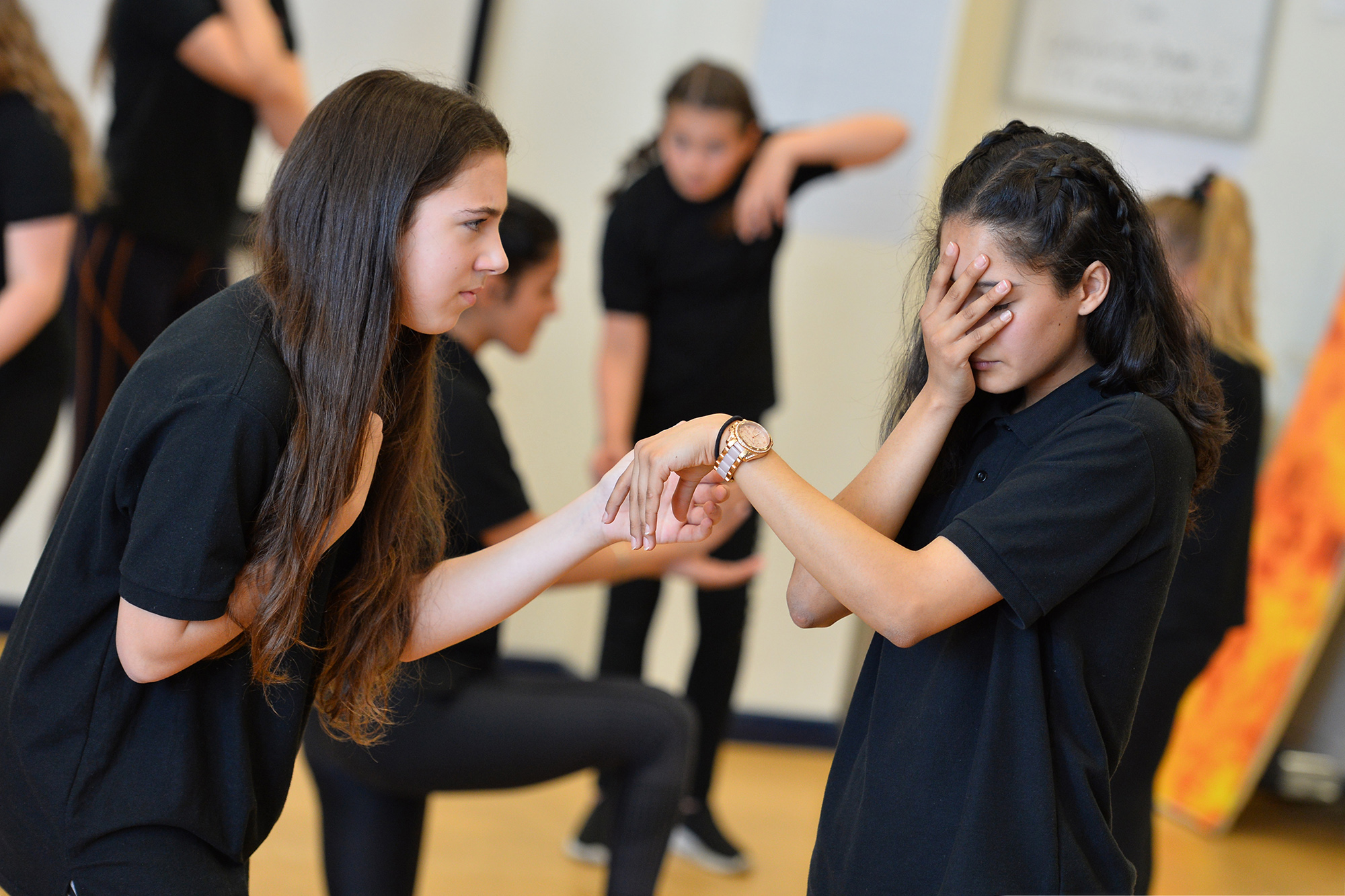
Exploring Musical Theatre tasks: Scene into Song
BY: Nicola King
19 April 2023
Our Musical Theatre exams are designed for candidates who want to demonstrate their skills in acting, singing and dance/movement, with these skills becoming increasingly integrated throughout the grades. The ‘Scene into Song’ task presents a unique challenge for candidates as they are asked to explore the transition between one skill into another. In this blog we will be exploring ‘Scene into Song’ in greater detail - the role of the transition of dialogue into song in musical theatre, the assessment requirements for exam work and some examples for Solo and Pair exams.
‘Scene into Song’ is a performance task at Solo Grades 4-8 and Pair Grades 5-8. The objective is for the candidate to demonstrate their ability to move seamlessly between dialogue and song; when speaking is no longer enough to advance the plot, convey the character’s inner thoughts and feelings or deepen the audience’s connection with the story. This transition is a skill in itself, fundamental to musical theatre which moves constantly between dramatic scenes and musical numbers. A well-crafted transition impetus or motivation will have a compelling reason for moving the story forward through song.
We are, therefore, looking for confident delivery of dialogue that moves effortlessly into the lyrics, sustaining the truth of the character’s intentions, sense of place and objectives. There should be a fluid transition with no pausing, treating the song as a continuation of the dialogue. As the candidate moves through the grades, the aim is for an increasing assurance in delivery and an ability to move from spoken text to sung lyrics with ease, not just establishing character and context, but also demonstrating a development of them.
The spoken element of the ’Scene into Song’ task can be adapted from a play, based on the lyrics of a song, or be an original piece devised by the candidate(s) themselves. This section need only be between 20 seconds to 1 minute in length – it is the moment of transition that is being explored in this task, not the entire dramatic scene itself. It is fine, also, for the chosen song to be edited to fit in with the time restrictions, particularly at higher grades where songs may be longer/more complex.
In the below examples taken from our Musical Theatre programme examples we can see how this might look at different grades.
Solo Grade 4
‘Ease on Down the Road’ from The Wiz (Charlie Smalls), with a self-written introduction to contextualise it.
Transition impetus – the 'Scene into Song' is a chance to choose one of the characters and show what they hope for once reaching Emerald City.
Solo Grade 5
‘Getting to Know You’ from The King and I (Richard R Rogers and Oscar Hammerstein II). First line: ‘Now look. You’re all up in that corner.’
Transition impetus - the 'Scene into Song' is Anna’s address to the children, followed by her song as she attempts to develop a relationship with them. Musically it has a sweeping lyricism which requires good breath control.
Solo Grade 6
Self-written monologue to contextualise ‘The Life I Never Led’ from Sister Act (Alan Menken and Glenn Slater)
Transition impetus - the 'Scene into Song' gives the candidate an opportunity to creatively explore the character of Sister Mary Robert who in this song considers the choices she made when joining the convent.
For Pair exams both candidates should perform the song and the duologue/dramatic extract. The spoken text and the song should develop character and story, and we are expecting interaction and communication between the candidates. In the below example we can see how this might look at Grade 6.
Pair Grade 6
A self-written duologue reminiscing about growing up on the same street/area, to move into the song ‘When You’re Home’ from In the Heights (Lin Manuel Miranda).
Transition impetus – the 'Scene into Song' is an exploration of the relationship between the characters of Benny and Nina from growing up to where they are in their lives now.
At Grades 7-8 for both Solo and Pair exams, the ‘Scene into Song’ task becomes part of the candidate(s) performance of a ‘continuous programme’. Here the candidate(s) must also consider how the song and spoken word piece connects to the other songs chosen in the programme - how they develop the character and story of the overall performance. In the below example you can see how this might be put together:
Solo Grade 8 ‘continuous programme of four contrasting pieces’
Performance — continuous programme of four songs:
1. ’Wall in My Head’ from Everyone’s Talking About Jamie (Dan Gillespie Sell and Tom MacRae)
2. ’Being Alive’ from Company (Stephen Sondheim)
3. ’I’ll Build a Stairway to Paradise’ from An American in Paris (George Gershwin)
4. Scene into Song piece – an extract from Paul’s monologue from A Chorus Line First line: ‘See, when I quit school’ into ‘Sweet Transvestite’ from The Rocky Horror Show (Richard O’Brien) OR ‘I am Lola’ from Kinky Boots (Cyndi Lauper)
Transition impetus- the 'Scene into Song' builds on the programme themes of identity and self-discovery, allowing candidates to explore the dramatic progression through their own interpretation.
The programme offers a range of musical styles and periods, as well as opportunities to build character and integrate movement while showcasing a range of technical skills.
Through engaging with this task candidates are given an opportunity to explore, in detail, a skill which sits at the heart of musical theatre, while developing industry relevant experience. For more information about the Scene into Song task take a look at this video.

.jpg)

/Blog/Students.jpg)
Comments & Replies